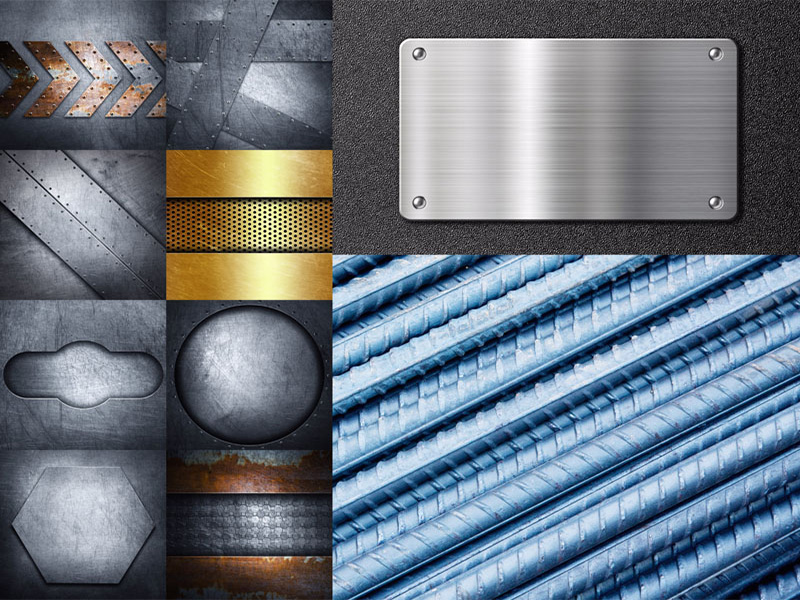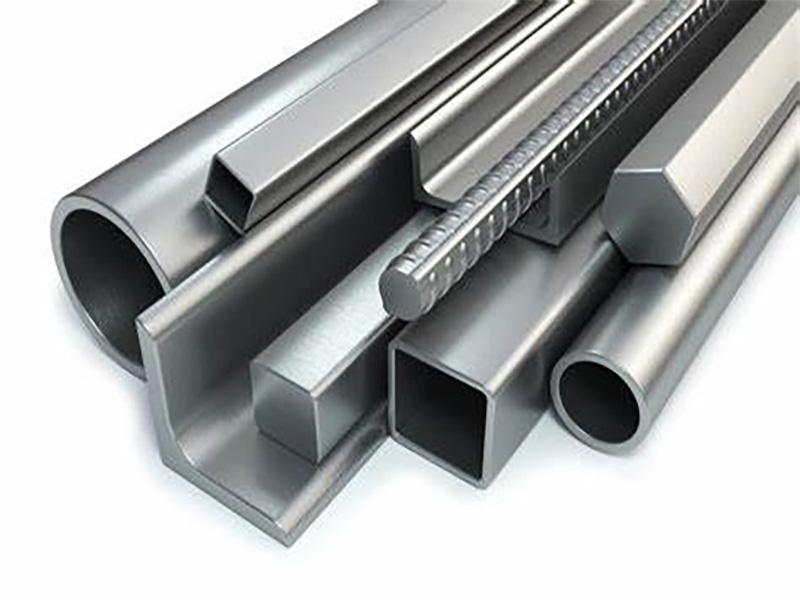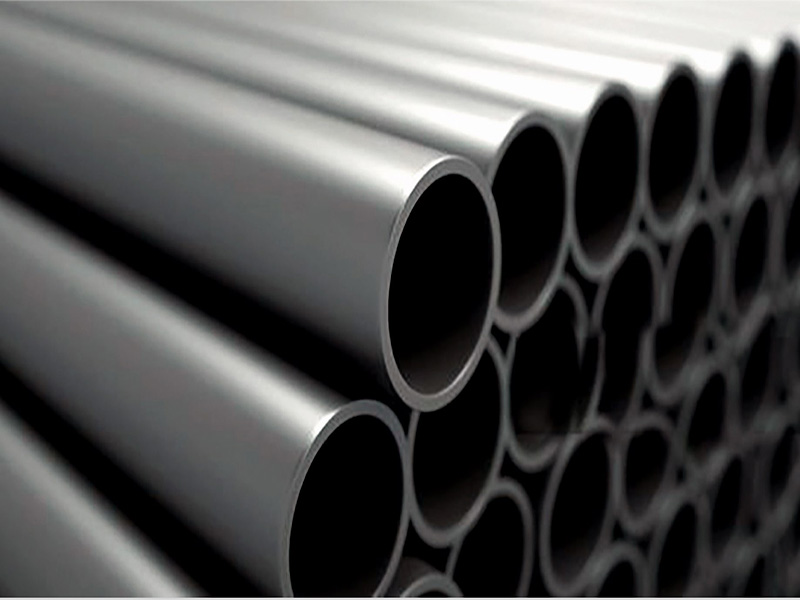

Tensile strength refers to the stress at which a material produces maximum uniform plastic deformation.

(1) In the tensile test, the maximum tensile stress of the specimen until fracture is the tensile strength, and the result is expressed in MPa. Some incorrectly call it tensile strength, tensile strength, etc.
(2) When testing the tensile strength of samples with instruments, the data of tensile fracture stress, tensile yield stress, elongation at break and so on can be obtained.
(3) Calculation of tensile strength:
σt = p/(b× D)
Where, σt is tensile strength (MPa); P is the maximum load (N); B is the width of sample (mm); D is the sample thickness (mm).
Note: the area used in calculation is the original cross-sectional area of the sample at the fracture, not the cross-sectional area of the port after fracture.
Is the critical stress value of material yield.
(1) For material with obvious yield phenomenon, yield strength is the stress at the yield point (yield value); (2) For materials with no obvious yield phenomenon, the stress when the limit deviation of the linear relationship between stress and strain reaches a specified value (usually 0.2% permanent deformation). It is usually used to evaluate the mechanical and mechanical properties of solid materials, and is the actual limit of material use. Because the material yields after necking, strain increases, so that the material lost its original function.
When the stress exceeds the elastic limit, the deformation increases rapidly. In addition to the elastic deformation, some plastic deformation also occurs. When the stress reaches point B, the plastic strain increases sharply and a small platform of fluctuation appears in the curve, which is called yield. The maximum stress and minimum stress at this stage are called the upper yield point and the lower yield point respectively. Because the value of the lower yield point is relatively stable, it is called the yield point or yield strength (σ S or σ0.2) as the index of material resistance.
Some steels (such as high carbon steel) have no obvious yield phenomenon. The yield strength of the steels is usually the stress at the time of slight plastic deformation (0.2%), which is called the conditional yield strength.
First explain the deformation of the material. The deformation of materials is divided into elastic deformation (the original shape can be restored by external force withdrawal) and plastic deformation (the original shape can not be restored by external force withdrawal, and the shape changes).
Silicon (Si) : Silicon is used as a reductant and deoxidizer in the steelmaking process, so the killed steel contains 0.15-0.30% silicon. If the silicon content in the steel exceeds 0.50-0.60%, silicon is considered an alloying element. Silicon can significantly improve the elastic limit, yield point and tensile strength of steel, so it is widely used as spring steel. Adding 1.0-1.2% silicon to quenched and tempered structural steel can increase the strength by 15-20%. The combination of silicon and molybdenum, tungsten, chromium, etc., has the effect of improving corrosion resistance and oxidation resistance, and can make heat-resistant steel. Low carbon steel with silicon 1-4%, high permeability, used for silicon steel sheet in electrical industry. The increase of silicon will reduce the welding performance of steel.

Manganese (Mn) : in the process of steel making, manganese is a good deoxidizer and desulfurizer, the general steel manganese 0.30-0.50%. Add more than 0.70% of carbon steel even if “manganese steel”, than the general amount of steel steel not only has enough toughness, and has higher strength and hardness, improve the quenchability of steel, improve the hot working performance of steel, such as 16Mn steel than A3 yield point 40% higher. Steel with manganese 11-14% has high wear resistance and is used for excavator buckets, ball mill linings, etc. The increase of manganese content weakens the corrosion resistance of steel and reduces the welding performance.
Phosphorus (P) : in general, phosphorus is harmful element in steel, increase the cold brittleness of steel, so that the welding performance deteriorates, reduce plasticity, so that the cold bending performance deteriorates. Therefore, phosphorus content in steel is usually less than 0.045%, and high quality steel is required to be lower.
Sulfur (S) : Sulfur is also a harmful element in general. It makes the steel produce hot brittleness, reduces the ductility and toughness of the steel, and causes cracks in forging and rolling. Sulfur is also detrimental to welding performance, reducing corrosion resistance. Therefore, sulfur content is generally required to be less than 0.055%, and high quality steel is required to be less than 0.040%. The addition of 0.08-0.20% sulfur to steel improves machinability, usually called free cutting steel.
Chromium (Cr) : In structural and tool steels, chromium significantly improves strength, hardness, and wear resistance while reducing plasticity and toughness. Chromium also improves the oxidation resistance and corrosion resistance of steel, so it is an important alloying element in stainless steel and heat-resistant steel.
Nickel (Ni) : Nickel increases the strength of steel while maintaining good plasticity and toughness. Nickel has high corrosion resistance to acid and base, rust resistance and heat resistance at high temperatures. However, as nickel is a scarce resource, other alloying elements should be used instead of nickel-chromium steel.
Molybdenum (Mo) : Molybdenum can refine the grain of steel, improve hardenability and thermal strength performance, at high temperature to maintain sufficient strength and creep resistance (long-term under high temperature stress, deformation, called creep). Adding molybdenum to structural steel can improve mechanical properties. It can also inhibit the brittleness of alloy steel due to fire. Redness can be improved in tool steel.
Titanium (Ti) : Titanium is a strong deoxidizer in steel. It can make the inner structure of steel compact, refine grain force; Reduce aging sensitivity and cold brittleness. Improve welding performance. Intergranular corrosion of cr 18 ni 9 austenitic stainless steel can be avoided by adding appropriate ti.

Vanadium (V) : Vanadium is an excellent deoxidizer for steel. Adding 0.5% vanadium to steel can refine grain structure and improve strength and toughness. The carbides formed by vanadium and carbon can improve the resistance to hydrogen corrosion under high temperature and pressure.
Tungsten (W) : Tungsten is a precious alloy element with high melting point and significant ratio. Tungsten forms tungsten carbide with carbon and has high hardness and wear resistance. The addition of tungsten to tool steel can significantly improve the red hardness and thermal strength, used as cutting tools and forging dies.
Niobium (Nb) : Niobium can refine grain, reduce the superheat sensitivity and temper brittleness of steel, improve the strength, but the plasticity and toughness are decreased. Adding niobium to ordinary low alloy steel can improve the corrosion resistance of atmospheric and high temperature hydrogen, nitrogen and ammonia. Niobium can improve welding performance. Intergranular corrosion can be prevented by adding niobium into austenitic stainless steel.
Cobalt (Co) : Cobalt is a rare precious metal used in special steels and alloys, such as thermally strong steels and magnetic materials.
Copper (Cu) : Wisco steel from daye ore, often contains copper. Copper improves strength and toughness, especially atmospheric corrosion. The disadvantage is that it is easy to produce hot brittleness during hot working, and the plastic content of copper exceeds 0.5% is significantly reduced. When the copper content is less than 0.50%, weldability is not affected.
Aluminum (Al) : Aluminum is a deoxidizer commonly used in steel. Adding a small amount of aluminum to steel can refine grain size and improve impact toughness, such as 08Al steel for deep drawing sheet. Aluminum also has oxidation resistance and corrosion resistance, aluminum combined with chromium, silicon, can significantly improve the high temperature performance and high temperature corrosion resistance of steel. The shortcoming of aluminum is that it affects the hot working, welding and cutting properties of steel.
Boron (B) : Adding a small amount of boron to the steel can improve the compactness and hot rolling properties of the steel and increase the strength.
Nitrogen (N): Nitrogen can improve the strength, low temperature toughness and weldability of steel, and increase the aging sensitivity.
Rare Earth (Xt) : Rare earth elements refer to the 15 lanthanide elements in the periodic table with atomic numbers 57 to 71. These elements are metals, but their oxides are so earth-like that they are commonly called rare earths. Adding rare earth into steel can change the composition, morphology, distribution and properties of inclusions in steel, thus improving various properties of steel, such as toughness, weldability and cold working performance. Adding rare earth into ploughshare steel can improve wear resistance.

For Further Details,Please Feel Free To Contact Us: